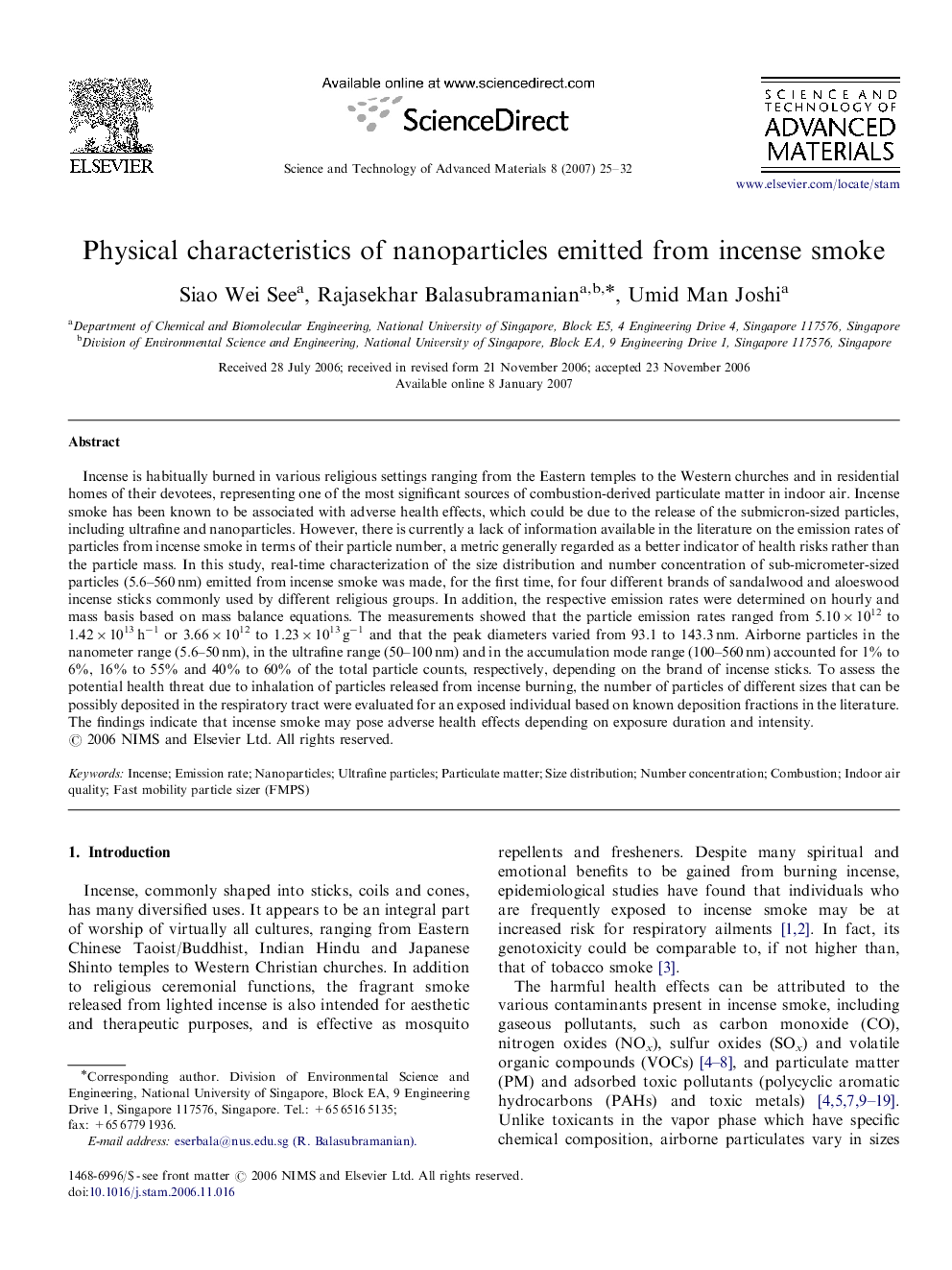| Article ID | Journal | Published Year | Pages | File Type |
|---|---|---|---|---|
| 1590863 | Science and Technology of Advanced Materials | 2007 | 8 Pages |
Abstract
Incense is habitually burned in various religious settings ranging from the Eastern temples to the Western churches and in residential homes of their devotees, representing one of the most significant sources of combustion-derived particulate matter in indoor air. Incense smoke has been known to be associated with adverse health effects, which could be due to the release of the submicron-sized particles, including ultrafine and nanoparticles. However, there is currently a lack of information available in the literature on the emission rates of particles from incense smoke in terms of their particle number, a metric generally regarded as a better indicator of health risks rather than the particle mass. In this study, real-time characterization of the size distribution and number concentration of sub-micrometer-sized particles (5.6-560Â nm) emitted from incense smoke was made, for the first time, for four different brands of sandalwood and aloeswood incense sticks commonly used by different religious groups. In addition, the respective emission rates were determined on hourly and mass basis based on mass balance equations. The measurements showed that the particle emission rates ranged from 5.10Ã1012 to 1.42Ã1013Â hâ1 or 3.66Ã1012 to 1.23Ã1013Â gâ1 and that the peak diameters varied from 93.1 to 143.3Â nm. Airborne particles in the nanometer range (5.6-50Â nm), in the ultrafine range (50-100Â nm) and in the accumulation mode range (100-560Â nm) accounted for 1% to 6%, 16% to 55% and 40% to 60% of the total particle counts, respectively, depending on the brand of incense sticks. To assess the potential health threat due to inhalation of particles released from incense burning, the number of particles of different sizes that can be possibly deposited in the respiratory tract were evaluated for an exposed individual based on known deposition fractions in the literature. The findings indicate that incense smoke may pose adverse health effects depending on exposure duration and intensity.
Keywords
Related Topics
Physical Sciences and Engineering
Materials Science
Materials Science (General)
Authors
Siao Wei See, Rajasekhar Balasubramanian, Umid Man Joshi,
